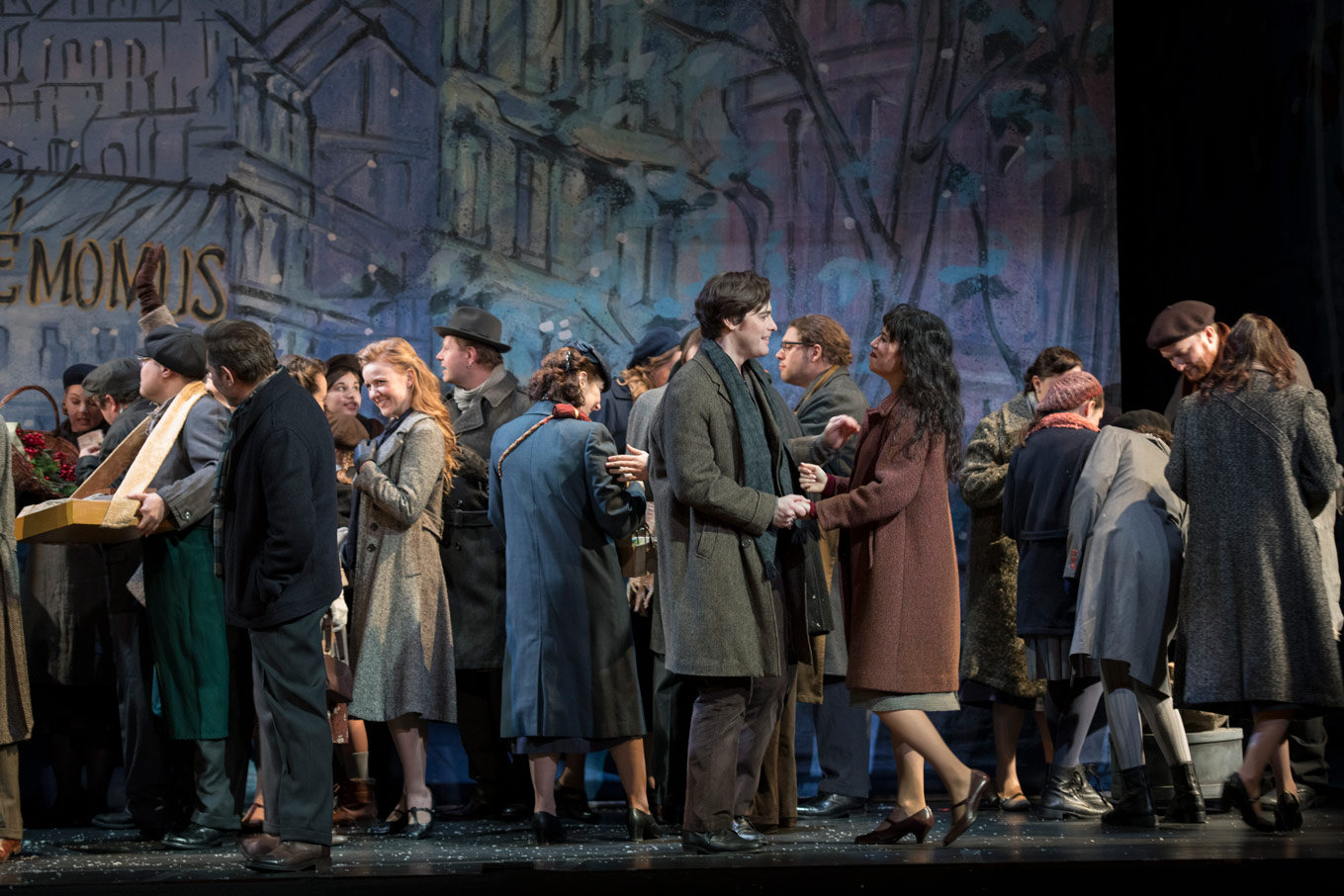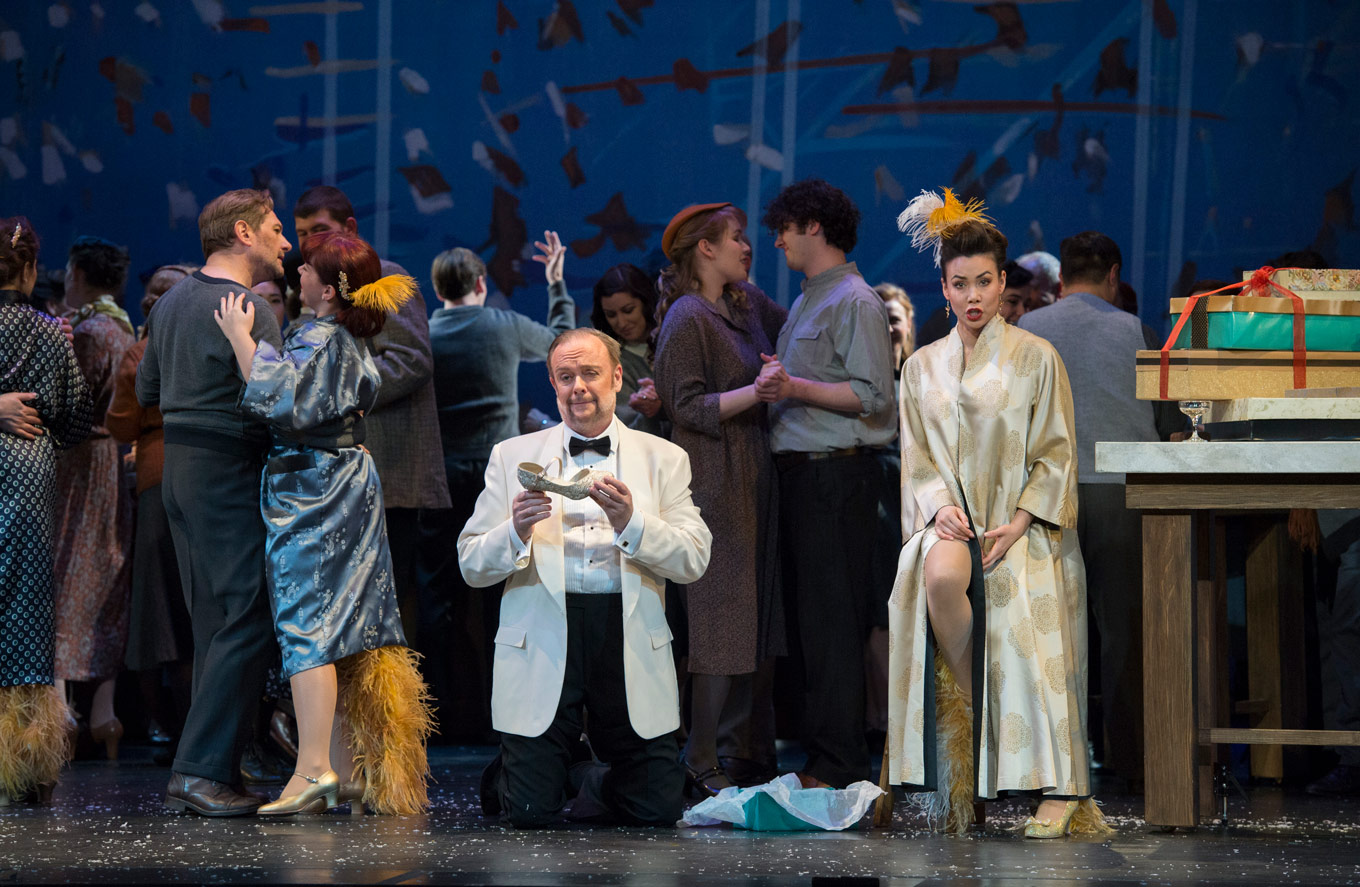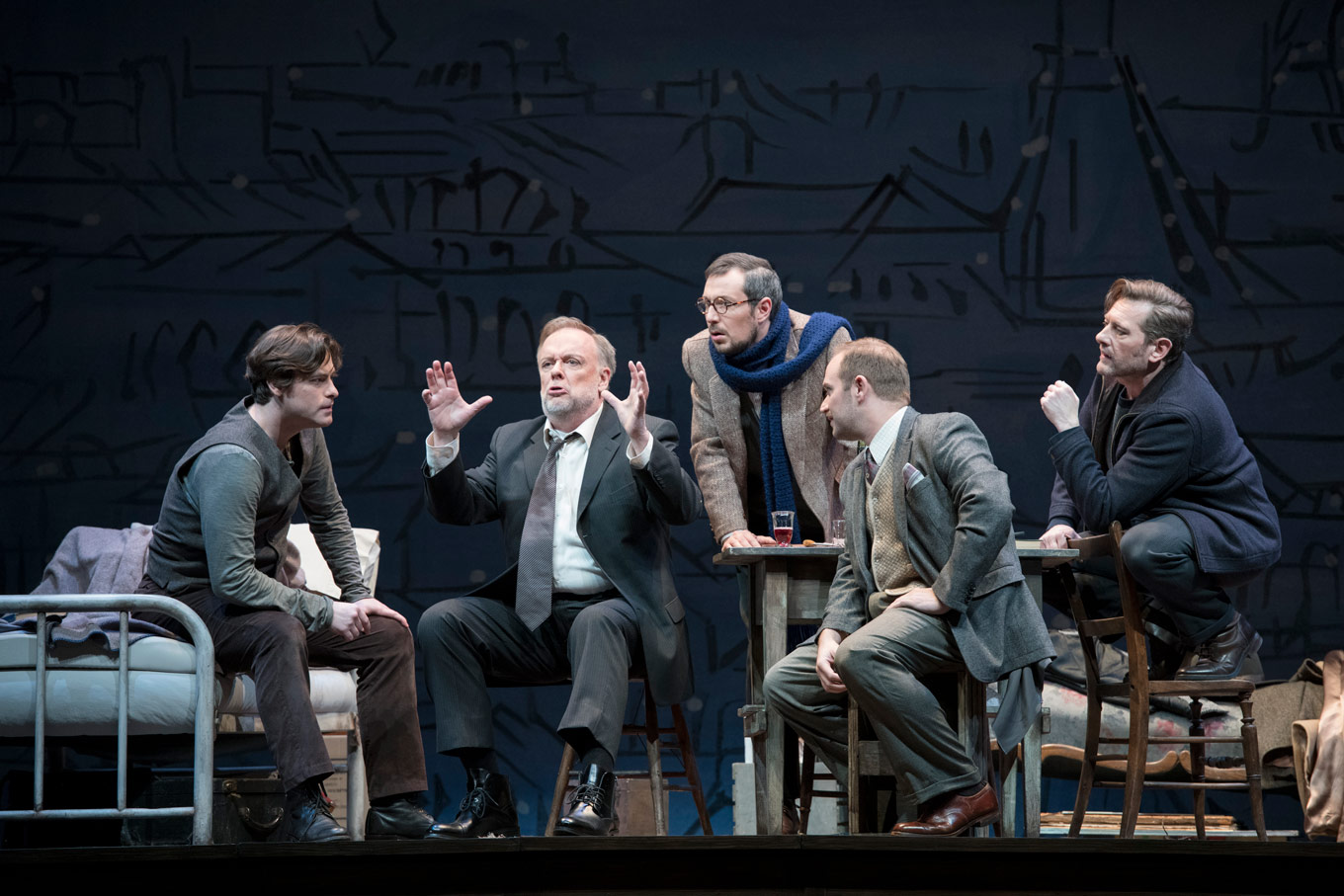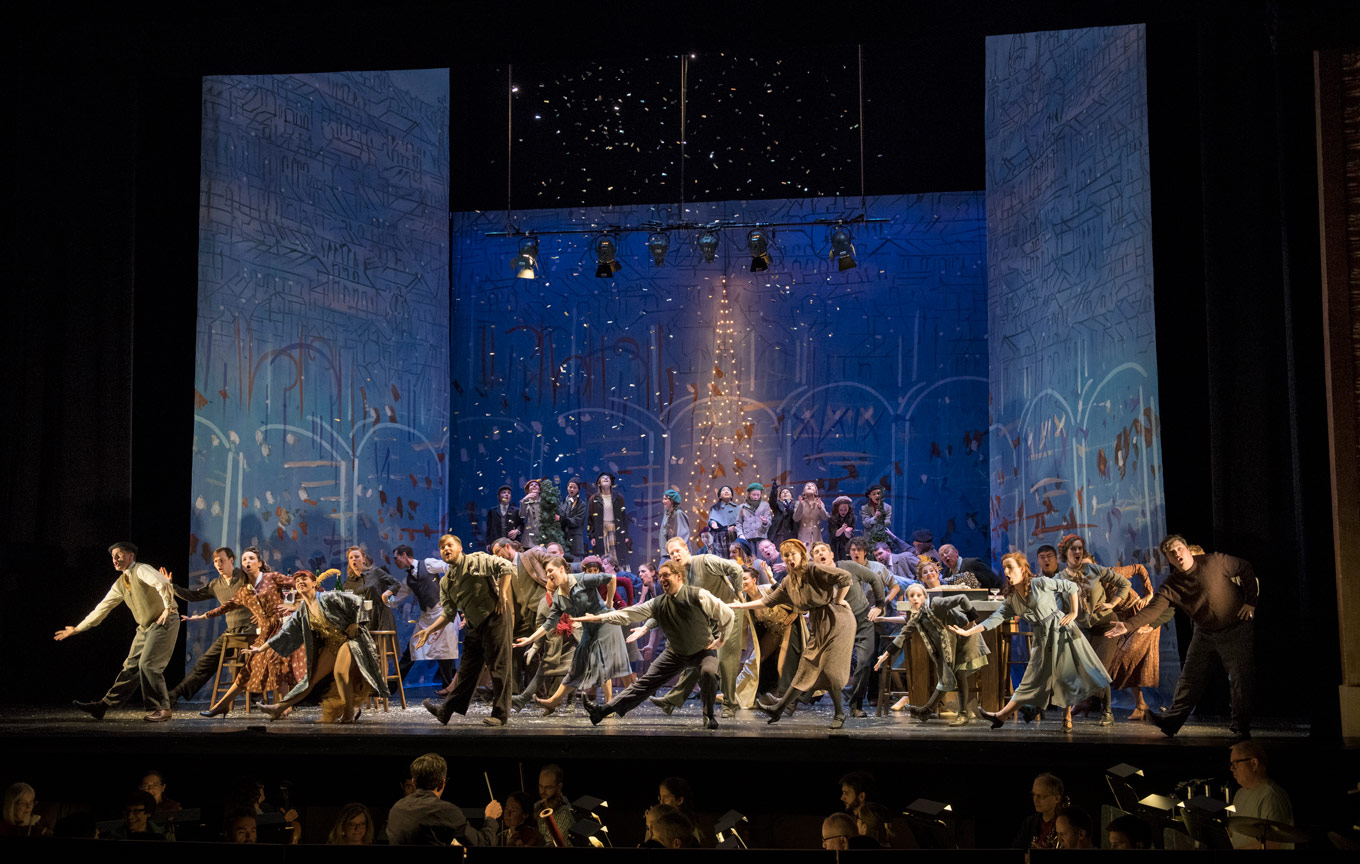
Lovely and sincere: POV's La Bohème
ReviewLa Bohème is a show that has become an absolute staple of the opera calendar. You can often set your watch by how often a company produces it, so the challenge always becomes breathing new life into a show that is performed so often, by so many companies across the globe. Pacific Opera Victoria finds many clever, inventive ways to do this in their recent production.

Opening with a impressionist-like painting of Paris as the backdrop, this production takes place in the 1950s, with our intrepid foursome of Rodolfo (Jason Slayden), Marcello (Brett Polegato), Colline (Stephen Hegedus), and Schaunard (Andrew Love) complaining about the cold. The four artists were playful and fun, and Polegato’s brooding about his loss of Musetta was funny and sincere. Polegato was vocally spectacular as Marcello, his rich and powerful baritone ringing to the back of the hall, even in the largest orchestral moments. They announced at the beginning of the show that both Polegato and Hegedus were fighting the flu and had decided to perform anyway, but it didn’t show anywhere in their voices.

Eventually Mimì (Lucia Cesaroni) appears looking for a light for her candle. With the production being in the 1950s, the lights suddenly go out on stage (presumably a power outage?), and Mimì appears with her candle. Cesaroni’s vocal performance was lovely as Mimì - light and effortless, even in her highest notes, and Slayden’s love for her was obvious and infectious. In this version, Mimì is far more coquettish - obviously trying to catch Rodolfo’s interest in a more seductive way than is typical of the demure Mimì we typically expect. Slayden’s “Che gelida manina” was absolutely breathtaking, his voice resonant and brilliant, and he absolutely brought the house down with his flawless performance.

At the opening of Act II, the chorus and children’s chorus was hectic and chaotic, with a snow-covered stage and the bustling streets, vendors, parents, and patrons brought to life by a large cast who had so much action that everywhere you looked there was something interesting to see. As they move into the Café Momus, this version is more of a cabaret, complete with Cabaret dancers starring Musetta (Sharleen Joynt) as the lead singer. In Musetta’s waltz, she performs a cabaret routine, complete with backup dancers and a sparkling gold Folies-Bergères-style outfit, both of which are obviously driving Marcello crazy.

The interplay between Polegato’s Marcello and Joynt’s Musetta was one of the highlights of the show. While their tempestuous relationship is obvious, their fights almost always end in an extremely passionate embrace, which left the audience howling with laughter. In their Act III fight, after being called a witch, rather than storming off angrily, Musetta jumps onto Marcello as they furiously make out on stage. It made me rethink why these two keep getting back together, as their passion is obviously not limited to their fighting.

The final act brings us back to the artists’ flat, with Mimi being carried in near death. The friends try to find ways to help her, including Colline (Stephen Hegedus) selling his beloved coat to try to buy food and medicine to save Mimi. The coat aria (“Vecchia zimarra”) is one of Puccini’s more unusual arias - an ode to a coat - but was carried off well by Hegedus, who brought strength and sincerity to his farewell. Rather than simply saying goodbye to his jacket, Hegedus showed a depth of emotion that make you believe he was mourning this death amongst them, and his helplessness in not being able to change it. The ending had the impressionist backdrops torn from the stage, revealing only the blank stage behind, and make Mimì’s death much more stark and dramatic in an unusual, bold choice in staging.

Overall, this production was lovely and sincere, and brought some innovative touches to an opera that has been done countless times, without altering or taking away any of the charm that has made it so immortal. I think audiences who have seen Bohème a hundred times, and those who are coming to it for the first time will find a great deal to love about this production.


Comments